Category: Artificial Intelligence
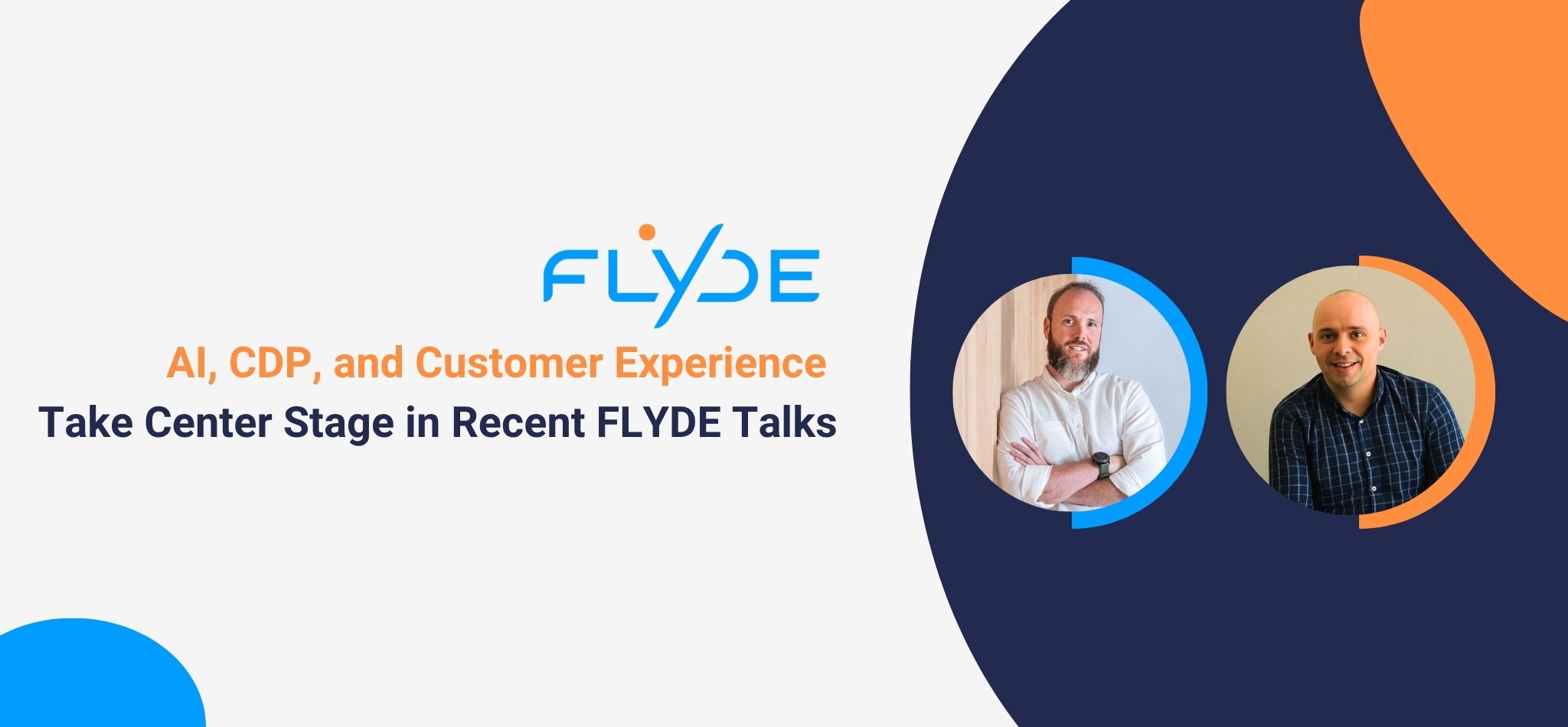
In this episode of FLYDE Talks, Luis Serrano, Head of Growth at Real Madrid, sits down with Paco Herranz, Founder and CEO of FLYDE, to explore how the concept of Growth Marketing has evolved in an environment shaped by artificial intelligence, extreme personalization, and data privacy—and how it can be applied to the unique context of football.
With this new episode of FLYDE Talks, we continue to bring together leading voices from across the marketing world to discuss, clearly and without jargon, the ideas that are transforming the industry today.
WHAT DO WE REALLY MEAN BY GROWTH?
Paco opens the conversation with a question every growth professional has asked themselves: What exactly do we mean by “growth”?
For Luis, the term has expanded significantly. What once referred to scaling digital channels now means understanding growth from a holistic perspective: digital and physical channels, data, user experience, and brand value.
“We’re no longer just talking about digital channels,” he says. “We’re talking about everything.”
Growth is no longer about funnel optimization alone; it’s about connecting every touchpoint between the user and the brand under one unified objective.
REAL MADRID’S ‘NORTH STAR’: THE SATISFIED MADRIDISTA
Paco and Luis agree that successful growth depends on having a clear metric that guides the overall strategy: the famous North Star Metric.
At Real Madrid, that North Star is the satisfied Madridista: a fan who trusts the club, shares their digital identity, and enjoys a full, consistent experience across online and offline channels. The satisfied Madridista is the “guiding star” behind every growth initiative at the club.
To measure that satisfaction, the team tracks KPIs that range from fan acquisition and retention, including engagement metrics, NPS (Net Promoter Score), and churn. The challenge lies in turning every interaction into a source of value, for both the fan and the brand.
‘ONE FAN, ONE EXPERIENCE’: UNIFYING DATA FOR ONE-ON-ONE PERSONALIZATION
From FLYDE’s perspective, growth can only scale if data is unified. It starts with data collection—first, second, and third party—and continues with data unification to create a single customer profile, the key to enable precise segmentation, activation, and measurement.
The unified customer profile is the foundation of any growth strategy. It allows teams to move from analysis to action: building micro-audiences, orchestrating omnichannel campaigns, and, most importantly, measuring attribution accurately. The real challenge isn’t gathering more data, but rather knowing where each impact truly comes from.
Real Madrid applies this philosophy with a simple vision: One fan, one experience.
From email to app, store to stadium, every interaction is tracked and optimized to deliver the best possible experience within the club’s ecosystem.
The ultimate goal is true micro-segmentation, evolving from “many-to-many” to “one-to-one,” offering each fan exactly what they need. As Luis puts it simply: “If I have a cat, why are you offering me dog food?”
Read more about the importance of data unification.
‘SEO IS NOT DEAD, AND GEO IS SEO.”
“SEO isn’t dead—and GEO is SEO.”
Through experiments with LLMs and metasearch engines, Luis found that generative AIs don’t search websites directly—they search search engines. In other words, for an AI to index your content, you still need to rank well on traditional search engines first.
So optimizing for visibility in AI results still means doing SEO: paying attention to microformats, structured data, and quality content. New tools, like Adobe’s LLM Optimizer, can even estimate how readable and indexable your content is for AI.
The takeaway is clear: the future of organic traffic will be hybrid and those who master SEO today will remain visible in the age of AI. At least based on what we know today.
MACHINE LEARNING AND GENERATIVE AI: THE NEW MARKETING DUO
Luis asks Paco how FLYDE integrates AI, and Paco explains that for him, AI isn’t a trend but a natural evolution of data-driven marketing.
FLYDE uses Machine Learning for key tasks:
- Measuring KPIs
- Detecting customer value patterns and projections
- Predicting churn
- Recommending products or audiences
On top of that, FLYDE has developed Brain, a generative AI layer across the platform. Brain acts as a data assistant, enabling any user, technical or not, to interact directly with their data ecosystem: building audiences, suggesting actions, analyzing campaigns, or even generating complex queries.
Its mission is to democratize access to data and remove the “blank page fear.”
As Luis jokes: “AI is like a shrimp cocktail—we have so many things to pick from that we don’t know where to start.”
THE CDP: THE NATURAL EVOLUTION OF THE CRM
Both speakers agree that a Customer Data Platform (CDP) like FLYDE is the strategic backbone that ties everything together.
At Real Madrid, the CDP is built around the Madridista Community, integrating data from e-commerce, the app, the Bernabéu tour, RMP Play, social media, and even in-stadium activity.
Thanks to this integration, the club can microsegment and activate data in real time. For instance, if a user is near the stadium, the system can trigger a personalized app notification with an offer or reminder.
The result is a coherent, contextual, and measurable experience—where data powers emotion.
Contact us to learn more about what the FLYDE CDP could do for your business.
PRIVACY AND REGULATION: GROWTH WITH RESPECT FOR THE USER
The new era of marketing comes with a non-negotiable condition: privacy.
Luis emphasizes that Real Madrid applies a strict transparency policy because trust is part of the fan experience itself.
Meanwhile, FLYDE advocates for ethical data usage. Its technology supports privacy-safe attribution using inferred data (such as average age, income level, or household type) to improve performance without compromising user trust.
The goal isn’t to know more, but to use what we already know better.
TOWARD A MORE HUMAN, MEASURABLE MARKETING
Growth marketing in 2025 operates at the crossroads of AI, CDPs, and customer experience.
But beneath it all lies a single principle: brands grow when they understand that data only matters when it creates satisfaction, trust, and real value.
Paco leaves us with an important conlcusion. Sustainable growth is born from the connection between data and people—and when done right, that connection is the future of marketing.
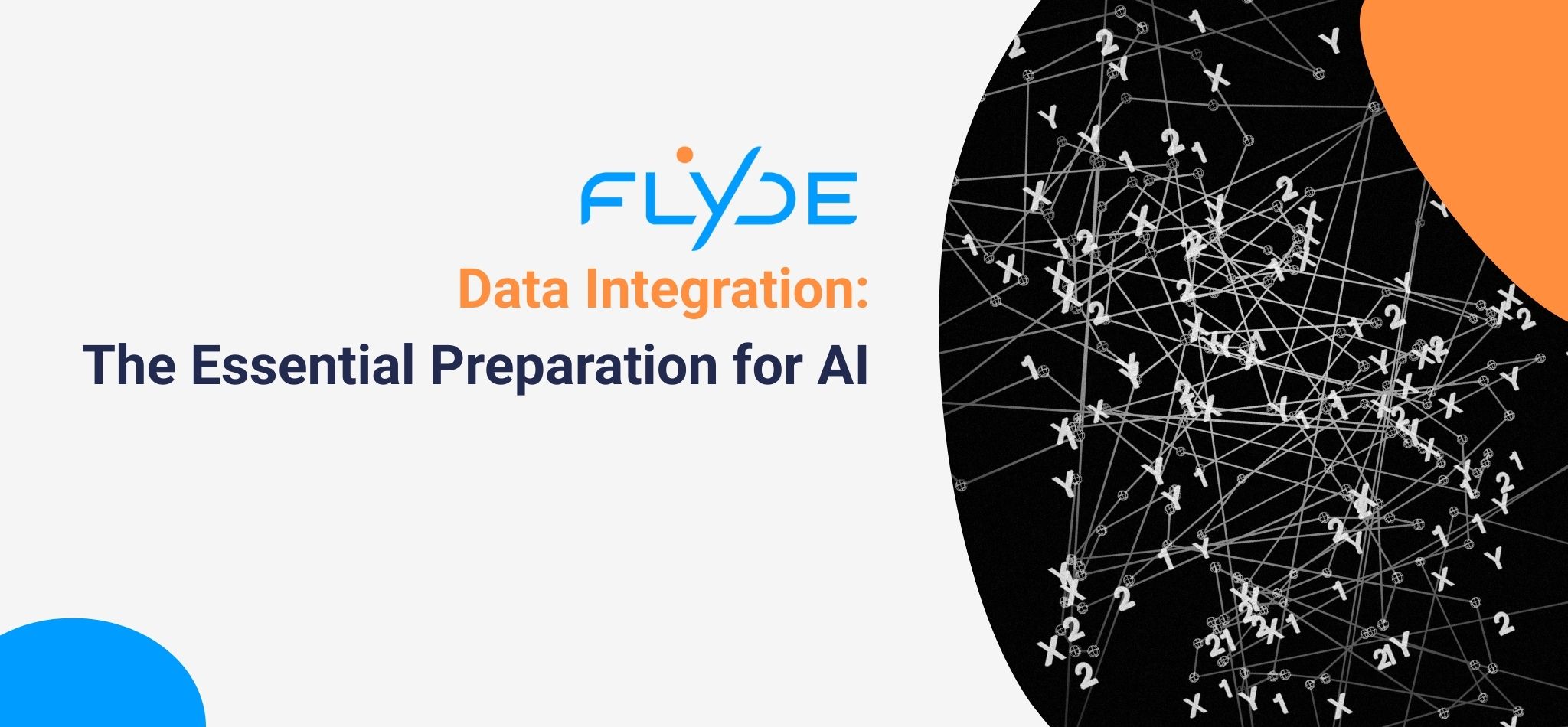
Data integration is the essential first step for any business looking to implement artificial intelligence technology. Everyone is talking about AI right now. Marketing campaigns that adapt in real time. Customer service that anticipates needs before they are expressed. Predictive models that make complex business decisions feel effortless. The possibilities sound endless. But here is the part that does not always make the headlines: AI cannot deliver results without the right foundation. That foundation is reliable, complete and accurate data.
According to Gartner’s 2025 Hype Cycle for Artificial Intelligence Goes Beyond GenAI, 57% of organizations believe that their data is not AI-ready. When customer data is scattered across platforms, presented in disconnected reports, and divided into silos, no algorithm, no matter how advanced, can make sense of it. The Gartner report also indicated that less than 30% of AI leaders report that their CEOs are satisfied with the return on AI investments. When AI ambitions clash with siloed data ecosystems and infrastructure constraints, AI will fail to deliver results.
THE HIDDEN WORK: DATA INTEGRATION
Many organizations want to explore AI but quickly discover that their data is not ready. Information lives in CRMs, ecommerce platforms, analytics tools, and support systems. Without a single source of truth, it is impossible to build accurate models or generate reliable insights.
The less glamorous side of AI innovation is the behind-the-scenes work of data integration. Without centralizing data, records are incomplete or duplicated, transactions are disconnected from behaviors, and marketing touchpoints are measured in isolation. The result is noise, not intelligence.
Data integration means more than storing data in one central place. It means connecting, cleaning, and structuring information across all your businesses’ systems, applications, and data sources into a unified, usable format. This unified dataset transforms fragments into full customer profiles. It reveals the journey from the first interaction to the most recent purchase. Most importantly, it provides the context that makes AI accurate and actionable.
HOW FLYDE CAN HELP
The FLYDE Customer Data Platform (CDP) is designed to solve the integration challenge and prepare data for AI-driven use cases. FLYDE connects your data sources, from marketing tools and sales systems to customer service platforms. It collects, standardizes, and combines data into complete profiles that update in real-time.
Once centralized in FLYDE, your data is no longer trapped in spreadsheets or siloed reports. It becomes AI-ready data, structured for insights and accessible across your business units.
With FLYDE you can:
- Build a reliable single view of each customer.
- Feed clean, structured data into AI and machine learning models.
- Provide your marketing, sales, and operations teams with a consistent source of truth.
Once your data is unified, AI can finally do its job. Some of the most powerful opportunities include:
- Smarter personalization: recommending the right product at the right moment, based on actual behavior patterns.
- Leveraging predictive models: forecasting churn, customer lifetime value, or seasonal demand with confidence because the data feeding the model is complete.
- Optimized decision-making: allocating marketing spend where it produces measurable ROI, informed by a complete customer journey.
- Operational efficiency: reducing duplicated work and aligning teams around consistent data.
THE REAL AI MINDSET
AI is not the starting point. It is the outcome of disciplined data integration and unification. Businesses that centralize and structure their data today will be the ones leading with AI tomorrow. Without that preparation, even the most advanced algorithms will fail to deliver meaningful results.
So, if you are excited about AI, and who is not, start with the foundation. With FLYDE, you will not just join the conversation about AI. You will be ready to put it into action. Contact us to schedule a demo and we can show you the possibilities your data holds for AI implementation.
Start taking control of your data today.
Schedule a meeting with one of our experts and discover how FLYDE can help your company achieve its goals.
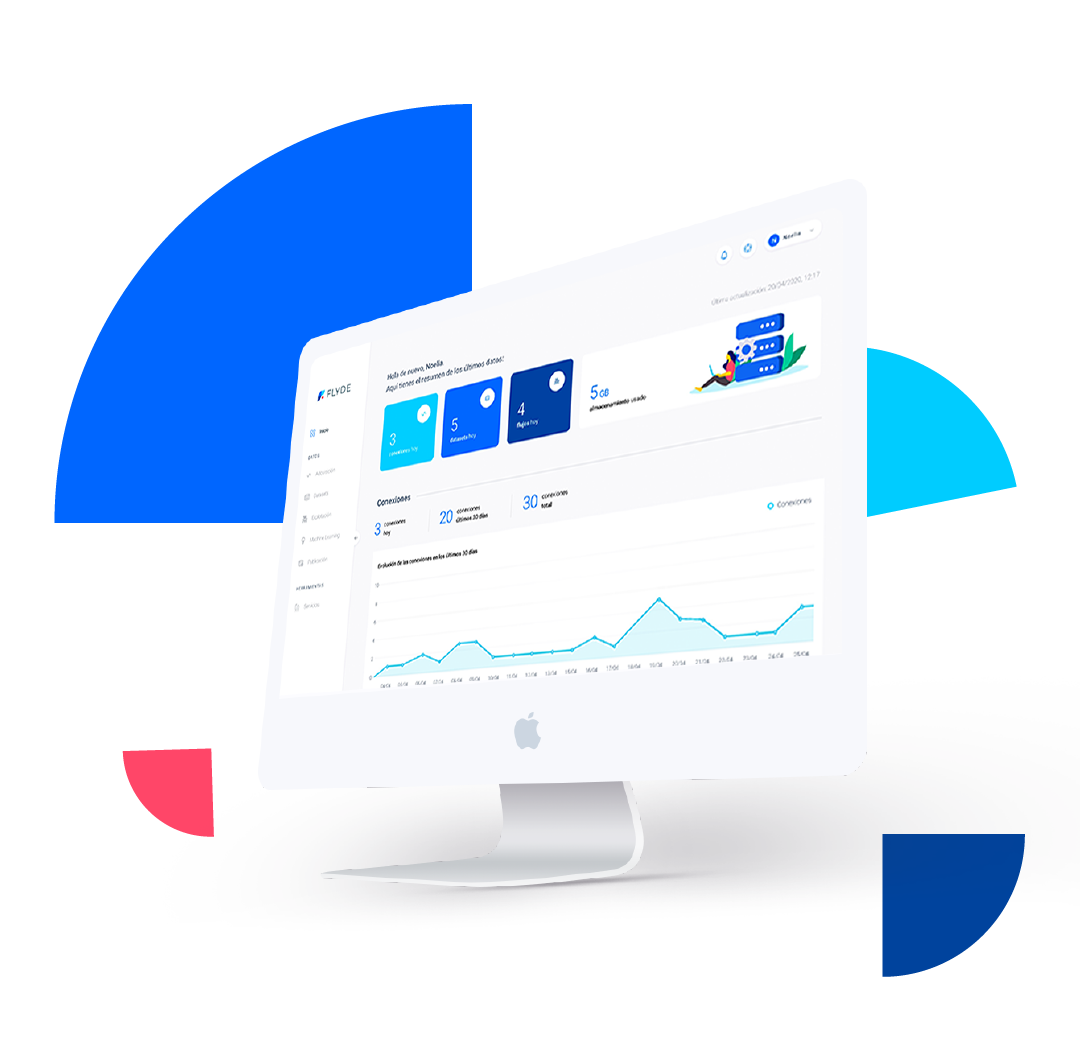
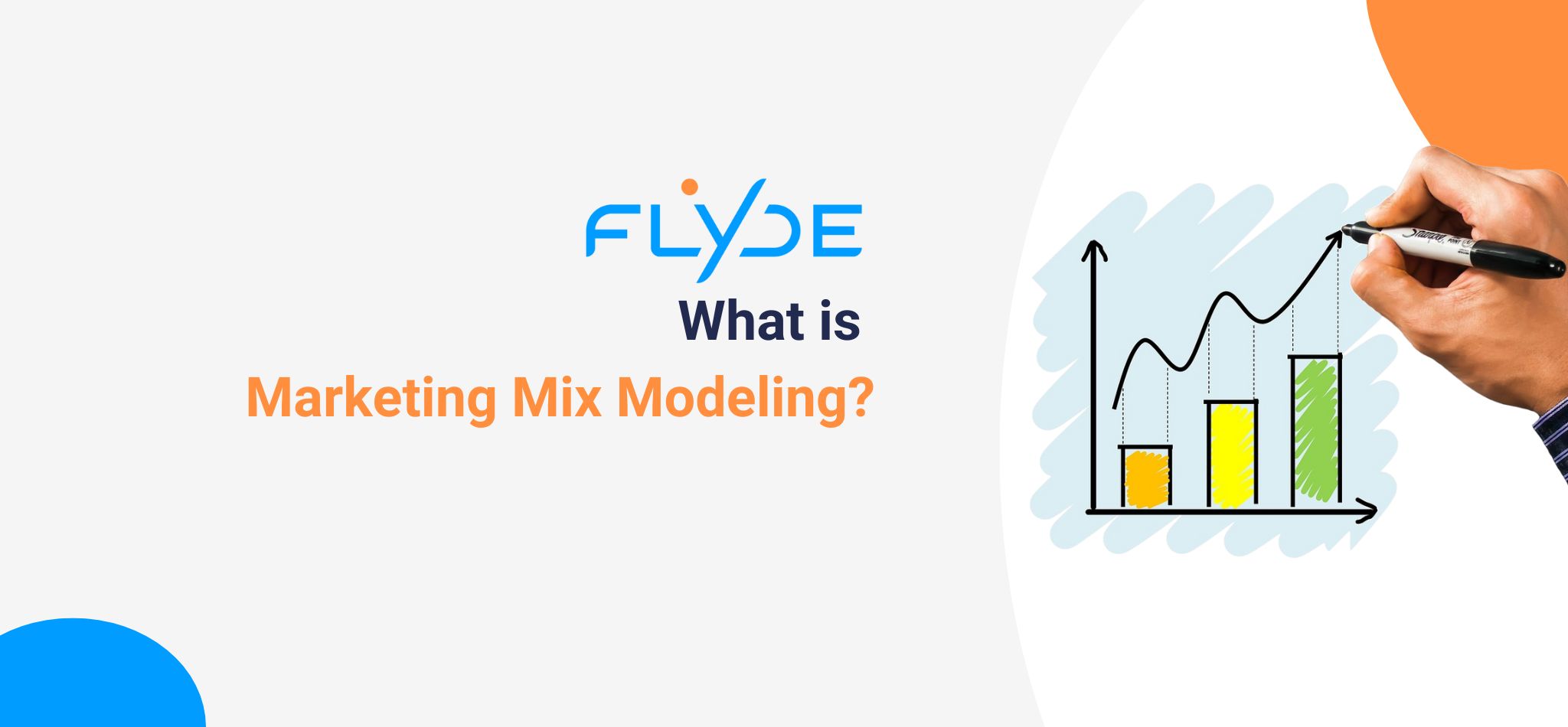
Marketing Mix Modeling is a statistical technique that helps marketers understand how different variables such as advertising, pricing, promotions, and seasonality impact business outcomes like sales, conversions, or revenue.
In simpler terms, MMM tells you how much each part of your marketing mix contributes to your results. It is based on historical, aggregated data, without requiring cookies or user-level tracking.
HOW DOES MMM WORK?
MMM analyzes data over time, typically at least two years, to isolate the incremental impact of each factor. It can measure both online and offline efforts such as:
- Paid search, social, and display advertising
- Traditional media like TV, radio, and print
- Promotions and pricing strategies
- Seasonality and external events like weather or competitor activity
By modeling these variables together, MMM provides attribution at the channel level and helps marketers understand the return on the investment (ROI) made in each channel.
WHY IS MMM MAKING A COMEBACK?
Marketing departments are increasingly accountable for justifying every cent they spend and demonstrating clear ROI on their activities. With budgets tightening and the deprecation of third-party cookies looming, many brands are looking back to a powerful, proven solution: Marketing Mix Modeling (MMM).
With the rise of user-level tracking via cookies and clickstream data, MMM took a back seat to multi-touch attribution (MTA). MTA is a marketing measurement model that assigns credit to multiple touchpoints along a customer’s journey to determine which channels and interactions influenced a conversion. Digital tracking, however, is facing significant obstacles due to privacy regulations. As a result MMM is becoming more relevant, because it uses aggregated data as opposed to user-level tracking, and covers both online and offline channels.
MMM VS. MULTI-TOUCH ATTRIBUTION
| Feature | MMM | MTA |
|---|---|---|
| Attribution type | Top-down (channel level) | Bottom-up (user level) |
| Data required | Aggregated, historical | User level, cookie-based |
| Works offline | Yes | No |
| Privacy compliant | Yes | Depends on data practices |
Rather than choosing one or the other, many brands are now combining MMM and MTA. MMM provides strategic, high-level planning while MTA supports tactical, in-the-moment optimization.
HOW FLYDE FITS IN: THE ROLE OF A CUSTOMER DATA PLATFORM (CDP)
At FLYDE, we help businesses unify and activate their customer data. This includes making the most of aggregate-level signals, which is where a Customer Data Platform (CDP) plays a crucial role in enhancing MMM.
A CDP is a centralized system that collects and unifies customer data from various sources (online, offline, behavioral, transactional, demographic) into a single, comprehensive customer profile. While MMM focuses on aggregate, historical data for channel-level insights, a CDP complements this by:
- Centralizing all marketing and sales data: A CDP acts as the single source of truth for all your customer-related data, making it easier to gather the diverse datasets needed for robust MMM. This includes data from CRM, ERP, web analytics, advertising platforms, and more.
- Cleaning and enriching datasets for modeling: CDPs are designed to ingest, cleanse, and standardize data from disparate sources. This ensures the data fed into MMM models is accurate, consistent, and complete, leading to more reliable insights. A CDP can also enrich data with additional attributes, improving the depth of your analysis.
- Once MMM provides insights on channel effectiveness and optimal budget allocation, a CDP can act as the bridge to activate these insights. It allows you to push segmentation and targeting recommendations derived from MMM directly to your ad platforms, email marketing tools, and CRM for more effective campaign execution.
- While MMM works with aggregated data, a CDP can provide a richer understanding by linking these aggregate insights with more granular behavioral data. Even without cookies, techniques like navigation fingerprinting (which anonymously tracks user journeys based on browser characteristics and other non-personally identifiable information) can be ingested by a CDP. This allows for a holistic view, where broad MMM findings can be refined and informed by observed customer behaviors, enabling more precise targeting and personalization within privacy boundaries.
This means smarter planning without compromising privacy and better orchestration of omnichannel efforts, from the first anonymous visit to long-term customer retention.
Marketing Mix Modeling aligns with the marketing industry’s most predominant trends: smarter measurement, responsible data use, and data-driven channel strategies.
HOW FLYDE CAN HELP
Want to learn more about how FLYDE supports MMM and helps unlock real omnichannel impact?
Contact us to schedule a meeting to discuss how a Customer Data Platform del Cliente (CDP) like FLYDE can enable you to implement MMM in your business.
Start taking control of your data today.
Schedule a meeting with one of our experts and discover how FLYDE can help your company achieve its goals.

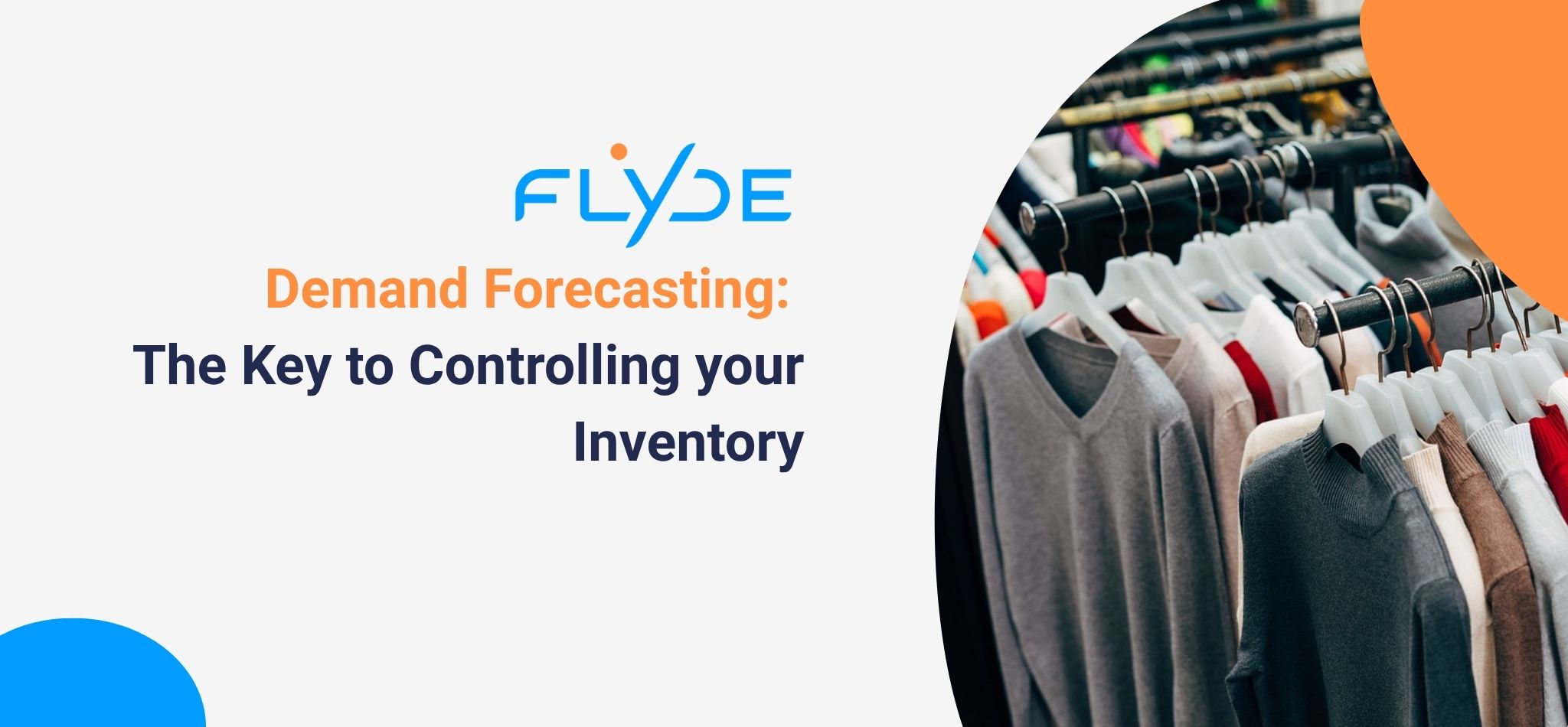
Success starts behind the scenes. While marketing, sales, and product innovation often steal the spotlight, inventory management can make or break your profitability and customer experience.
Think of your stock as a dynamic, strategic asset. Managed well, it fuels growth. Neglected, it quietly drains your resources and undermines your business.
THE COSTS OF INVENTORY MISMANAGEMENT
Poorly managed stock has immediate and costly consequences:
- Stockouts: A customer is ready to buy, but the item isn’t in stock. That’s not just a lost sale; it’s a missed opportunity and a negative customer experience. According to a study carried out by the IHL Consulting Group, an estimated $1.2 trillion in global retail sales was lost in 2023 due to stockout.
- Excess inventory: You’re tying up capital, crowding your warehouse, and risking spoilage, theft, or obsolescence. Overstock quietly erodes your bottom line. The IHL Group estimated that excess inventory cost retailers about $562 billion in 2023 due to markdowns and obsolescence.
- Inefficient operations: Poor stock management leads to delays, fulfillment mistakes, and disrupts workflows. The consequences in terms of employee productivity and job satisfaction can also be far-reaching.
THE BENEFITS OF SMART STOCK MANAGEMENT
According to the Institute for Business Forecasting, a 15% increase in inventory forecasting accuracy translates into a 3% increase in earnings before interest and tax (EBIT). Great inventory management is strategic. When done right, it delivers:
- Increased customer satisfaction: Reliable stock availability builds trust and keeps customers coming back.
- Reduced costs: You’ll be able to avoid surcharges for rush shipping, unnecessary storage fees, and waste from obsolete stock.
- Better cash flow: Freeing up capital from excess inventory gives you more flexibility to invest in growing your business.
- Efficient operations: With clear processes and real-time data, your team can move faster and make fewer mistakes.
- Smarter decisions: Accurate inventory data allows you to make smarter, data-driven business decisions. It helps guide pricing, purchasing, and marketing based on real demand.
THE ROLE OF TECHNOLOGY
Fortunately, artificial intelligence (AI) and machine learning (ML) are transforming inventory management by enabling more accurate demand forecasting. Demand forecasting is the practice of using historical data, market trends, and advanced analytics to predict future customer demand for a product or service. It empowers businesses to make smarter decisions across inventory, production, staffing, and budgeting—ultimately reducing waste, avoiding stockouts, and improving operational efficiency.
AI/ML-powered demand forecasting delivers key advantages for inventory management, including:
- Real-time visibility: Instantly see what’s in stock, where it is, and what needs replenishing.
- Automation: Streamline purchasing, receiving, and fulfillment processes to boost efficiency and reduce errors.
- Advanced analytics: Detect trends, optimize inventory levels, and identify bottlenecks or slow-moving stock.
- System integration: Centralize data from sales, finance, and e-commerce platforms. A Customer Data Platform (CDP) like FLYDE can help unify and enrich this data for smarter forecasting.
INVENTORY MANAGEMENT HEALTH CHECKLIST
How effective is your inventory management system? If you answer “no” to several of these questions, it might be time to rethink your approach.
Data & Visibility
- Can you see inventory levels in real time across all channels and warehouses?
- Do you have a centralized view of customer demand trends?
- Is your inventory data integrated with sales, marketing, and finance systems?
Forecasting & Planning
- Are your forecasts based on historical data and real customer behavior?
- Are your forecasting models updated regularly?
- Can you confidently anticipate when you will encounter a spike or a lull in demand?
Efficiency & Operations
- Is your restocking process automated (or is it manually triggered)?
- Are fulfillment mistakes (e.g., wrong items, delayed shipments) a rare exception?
- Do you know your inventory turnover rate?
Financial Impact
- Are you confident that your inventory is not tying up more capital than necessary?
- Are you able to avoid paying extra fees for expedited shipping or unnecessary storage?
- Does your team have fast access to accurate data to make stock decisions?
HOW FLYDE CAN HELP
To accurately forecast demand and optimize inventory, a Customer Data Platform (CDP) like FLYDE is essential for consolidating data from various sources.
FLYDE centralizes data from touchpoints across paid media, CRM, social, email, web navigation, and offline events. Whether you’re working with dozens of fragmented sources or just trying to get a full view of the customer journey, FLYDE brings your data together and enriches it with socio-demographic and interaction data. With FLYDE’s ML algorithms, you’ll be able to analyze the behavior of your customers, observe in real time how their movements affect the demand for your products, and anticipate future demand.
Contact us to schedule a demo to find out how FLYDE approaches demand forecasting in our easy-to-use Customer Data Platform.
Start taking control of your data today.
Schedule a meeting with one of our experts and discover how FLYDE can help your company achieve its goals.

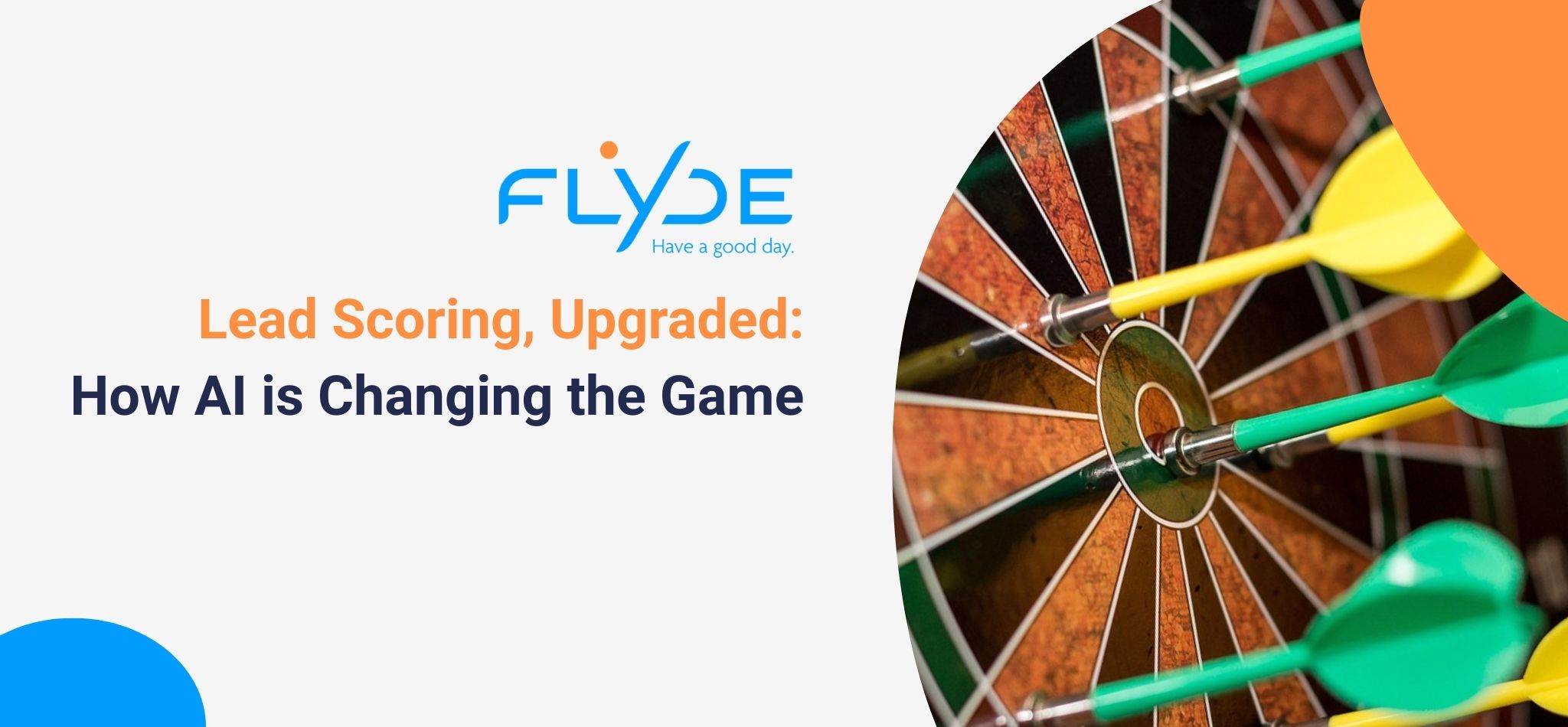
You’ve assigned points to job titles, tracked email opens, and called the hot leads who ghosted. Welcome to the world of traditional lead scoring.
For years, marketers have relied on scoring models that evaluate leads based on demographics and surface-level actions like website visits or email clicks. But these models often fail to capture true buyer intent. They are based on assumptions as opposed to behavior, and they often overlook high intent leads with atypical characteristics.
THE PROBLEM WITH TRADITIONAL LEAD SCORING
Despite being a foundational tool in marketing, traditional lead scoring has major drawbacks:
- Inaccuracy – Based on incomplete or outdated data.
- Subjectivity – Scoring criteria are often inconsistent or biased.
- Lack of Scalability – Difficult to maintain effectively as lead volume grows.
- Blind Spots – Ignores pre-identification behavior (e.g. anonymous browsing).
These models can overlook high-intent leads who don’t fit your ideal buyer persona. Let’s imagine, your sales team typically targets CEOs or other high-level decision makers. With traditional lead scoring methods, you could easily overlook a junior employee who is doing research for his/her boss, who is the CEO.
AI-powered lead scoring, however, goes beyond assumptions, delivering real-time insights that help you prioritize the right leads, faster.
Traditional lead scoring sees behaviors. AI understands their intent.
MEET LEAD2CUSTOMER: FLYDE’S AI MODEL THAT UNDERSTANDS THE WHOLE JOURNEY
FLYDE’s platform replaces the outdated model with something smarter: Lead2Customer, our AI-powered predictive model that evaluates leads based on real behavior, not assumptions.
Unlike traditional methods that rely heavily on demographic filters, Lead2Customer looks at a rich set of behavioral signals across the entire funnel, such as:
- Website navigation patterns (even before users identify themselves)
- Newsletter signups
- Email marketing open and click-through rates
- Webinar attendance
- Social media engagement
HOW IT WORKS
The Lead2Customer algorithm uses machine learning to calculate a dynamic conversion probability, expressed as a percentage. This means every lead in your CRM isn’t just labeled “hot” or “cold”—they’re scored in real time based on how likely they are to convert.
Unlike traditional systems in which leads are scored periodically, AI systems can adjust scores in real time as new data becomes available. This means that your sales and marketing teams can act even when a lead’s behavior suddenly changes. Imagine for example, that a lead suddenly shows new interest by attending a webinar, downloading a white paper, and visiting your pricing page all within an hour. AI doesn’t have to wait for your weekly scoring batch; it can immediately flag the lead and your sales team can reach out.
What’s more? It learns and improves over time. As your AI system observes how leads convert (or fail to), it learns to identify better indicators, continuously optimizing the scoring model to match your evolving data. This ongoing learning process is one of the most valuable aspects of AI-powered lead scoring, as it ensures that your system is always evolving to reflect changes in customer behavior, industry trends, and marketing strategies.
HOW AI-POWERED LEAD SCORING IS CHANGING THE GAME
AI-powered lead scoring methods, like Lead2Customer, enable your sales and marketing teams to work more efficiently and effectively:
- Behavior-based scoring – Uncover high-potential leads who don’t match your typical buyer persona.
- Full-funnel visibility – Capture both anonymous and identified user behavior.
- Real-time adaptability – Prioritize leads based on the latest interactions.
- Increased conversion rates – Focus on the leads that matter most, when it matters most.
- Smarter use of resources – Don’t waste time on dead-end prospects.
- Faster response times – Engage leads at peak interest.
- More personalization – Tailor content and timing to the moment.
SMARTER LEAD SCORING STARTS WITH SMARTER DATA
To power AI-driven scoring, you need unified, real-time customer data. That’s where FLYDE’s Customer Data Platform (CDP) comes into play. FLYDE pulls data from every touchpoint—website interactions, email engagement, social activity, and many more—creating a centralized customer profile. This unified data layer allows AI to update lead scores dynamically across all platforms, ensuring that your marketing and sales teams are always working with the most accurate and up-to-date insights.
With FLYDE powering your lead scoring process, your team can make faster, smarter decisions, prioritize the highest-value opportunities, and ensure that every lead counts.
Contact us to schedule a demo to find out how FLYDE can help you unlock the full potential of AI to boost the success of your marketing and sales teams.
Start taking control of your data today.
Schedule a meeting with one of our experts and discover how FLYDE can help your company achieve its goals.


In a perfect world, a customer clicks on an ad, falls in love with your product, and converts on the spot. You know exactly which campaign worked, which channel gets credit, and where to increase your ad spend. Easy.
But we don’t live in a perfect world. The customer journey isn’t single-channel or linear. We live in the age of omnichannel marketing. The reality is that a single purchase might be influenced by a Google search, a TikTok video, a webinar, a promotional email, or a conversation with your sales team.
Attribution—figuring out which touchpoints actually matter in the buyer’s journey—is no longer simple. It’s a messy, multi-source puzzle. And without solving it, you risk spending your budget in the wrong places.
So, let’s dive in and examine what attribution really means in omnichannel marketing campaigns and what challenges we face as marketers to assign credit where credit is due.
WHAT IS ATTRIBUTION?
At its core, attribution is about assigning credit to each step that helps take a customer from “just looking” to “just bought.”
In single-channel or linear journeys, this used to be easy. But today, marketers rely on a mix of digital and offline channels working together, which means that the process of attribution has had to evolve.
Let’s look at a few common attribution models:
- First-touch: Gives all credit to the first interaction. If we want to focus on awareness metrics, this is a great approach, but it offers little insight in terms of conversions.
- Last-touch: Credits the final click before a conversion. Many platforms use this as the default model, but it represents an oversimplification of the customer journey.
- Linear: Spreads credit evenly across all touchpoints. Here, the whole journey is taken into account, but not very strategically.
- Time-decay: Gives more credit to recent touchpoints. This model is well-suited to long nurture cycles.
- U-shaped (position-based): Emphasizes the first and last touchpoints, with less credit to the middle. Here, there is an emphasis on the awareness and decision stages of the funnel, but the model is apt to under-credit important engagement actions.
- Data-driven: Uses machine learning to assign weights based on actual conversion data. This model is ideal—but requires strong data hygiene and scale.
Each model has its own advantages and its own bias. In complex, omnichannel campaigns with many different touchpoints, it becomes increasingly important to move beyond simplistic models and embrace AI-powered attribution, which can analyze massive, messy datasets and zero in on what is driving conversions.
WHY DOES ATTRIBUTION GET COMPLICATED IN OMNICHANNEL CAMPAIGNS?
In the world of omnichannel marketing, the customer journey rarely follows a predictable path. The customer journey nowadays is non-linear, fragmented, and often, a portion of the journey is undertaken while the user is still anonymous.
Here’s why attribution is so tricky today:
- Device-hopping behavior: Your lead might see an Instagram ad on a mobile, Google your product on a laptop, and sign up for your newsletter from a desktop at work. The right tracking set-up is essential for connecting the dots.
- Walled gardens: Platforms like Meta, Google, and Amazon often don’t share data with each other—or with you! In these cases, each platform may allow advertising and data analysis within its own ecosystem using proprietary attribution and tracking methods, while limiting access to raw data for export to other platforms.
- Offline influences: Sales calls, print materials, events, or word-of-mouth are all powerful but hard to track.
- Privacy regulations: With the deprecation of third-party cookies and tighter data regulations, user-level tracking is more limited, making granular attribution even more challenging.
The result? A lot of guesswork and misallocated spending.
HOW TO IMPLEMENT ATTRIBUTION STRATEGIES FOR OMNICHANNEL MARKETING CAMPAIGNS
The key to approaching attribution for omnichannel marketing is to stop aiming for perfect attribution—and start aiming for actionable insight.
Here’s how to get started:
- Unify your tracking setup:
- Implement clean, consistent UTM parameters
- Your CRM and ad platforms must be connected. A Customer Data Platform (CDP) like FLYDE can bring it all together (more on that later)
- Invest in smarter analytics:
- Develop funnel-based dashboards tied to your KPIs
- Implement machine learning models if your data volume allows
- Set realistic expectations:
- Attribution will never be 100% accurate
- Focus on directional insight that can inform your strategic decisions
- Align attribution analysis to business outcomes (not just clicks)
Instead of chasing perfection, chase progress. Map the journeys, unify the data, and use a tool like FLYDE to reveal insight. The goal isn’t to give perfect credit; it’s to make smarter, more confident decisions.
FLYDE’S VISION ON SMARTER ATTRIBUTION
To address these omnichannel challenges and the need for a unified view, a Customer Data Platform (CDP) like FLYDE becomes essential for consolidating data from various sources.
FLYDE centralizes data from touchpoints across paid media, CRM, social, email, web navigation, and offline events. Whether you’re working with dozens of fragmented sources or just trying to get a full view of the customer journey, FLYDE brings your data together to offer clarity and insight.
Here’s a real-world example:
Imagine you run a lead-gen campaign using a CPC paid search campaign in Google, Meta ads, a product webinar, and follow-up email flows. With FLYDE:
- All touchpoints are stitched together—even across platforms.
- You can see how many leads saw an ad and attended the webinar.
- You can compare performance across acquisition and nurture phases.
- Attribution is based on your journey logic, not just Google’s last-click default.
This kind of transparency doesn’t just look good in reports—it drives better decision-making. When you know what’s working, you can double down. When something’s underperforming, you can pivot fast. Ultimately, effective attribution leads to optimized advertising spend, a deeper understanding of customer behavior, and improved ROI.
Contact us for a demo and we can show you how FLYDE approaches omnichannel attribution in our easy-to-use Customer Data Platform.
Comienza a tomar el control de tus datos desde hoy.
Agenda una reunión con uno de nuestros expertos y descubre cómo FLYDE puede ayudar a tu empresa a alcanzar sus objetivos.

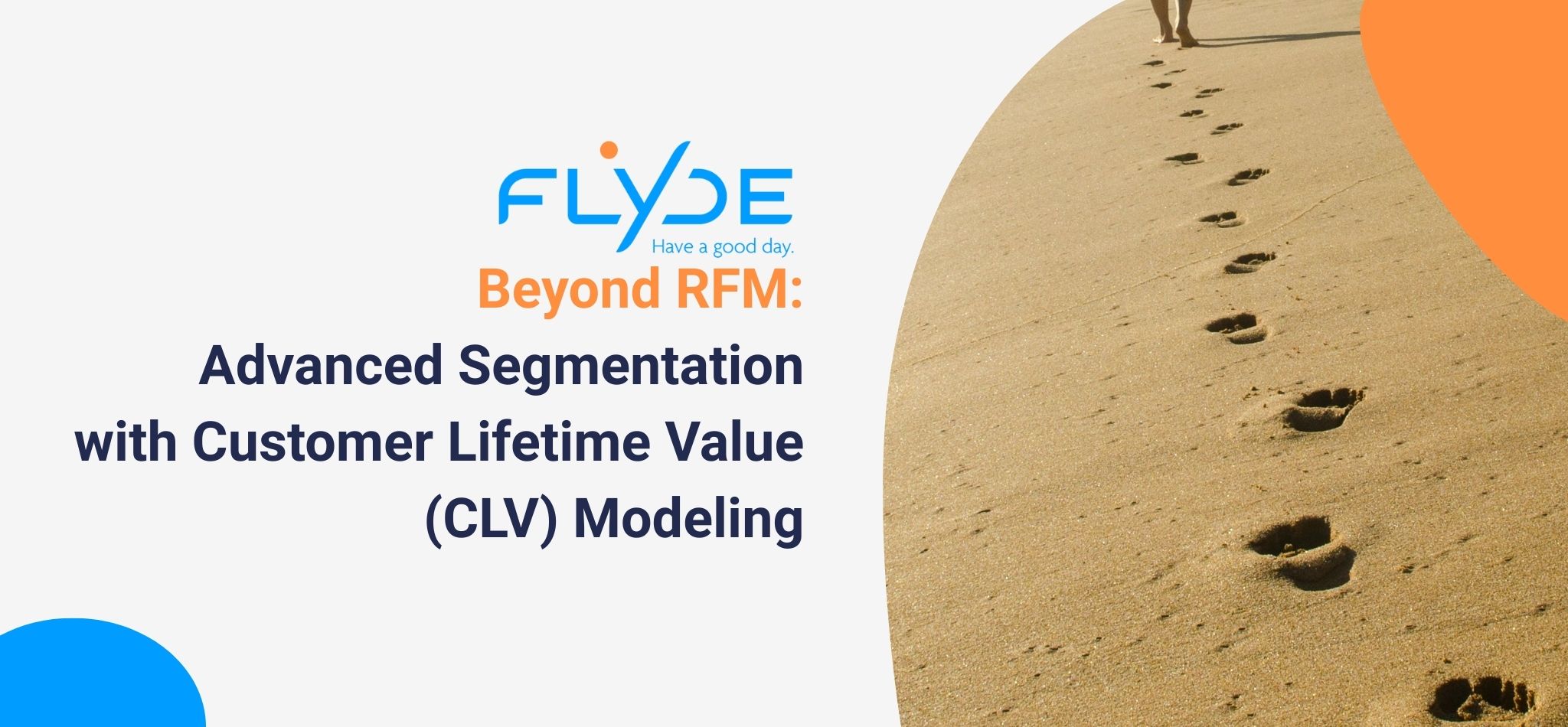
In the world of customer analytics, RFM analysis has long been a favorite for segmenting customers based on their Recency, Frequency, and Monetary behaviors. While RFM provides a solid foundation, many businesses are looking for more advanced segmentation techniques to capture the full picture of customer behavior. One such method is Customer Lifetime Value (CLV) modeling, which estimates the total revenue a customer is likely to generate over their entire relationship with your brand.
In this post, we’ll explore how CLV modeling works, its benefits, and how it complements—or even surpasses—traditional RFM analysis.
WHAT IS CUSTOMER LIFETIME VALUE (CLV)?
Customer Lifetime Value (CLV) is a prediction of the net profit attributed to the entire relationship with a customer. CLV is forward-looking. It allows marketers to estimate not only who your best customers are today, but also who will be most valuable in the future.
Key Components of CLV:
- Purchase Frequency: How often a customer is expected to buy.
- Average Order Value: The typical value of each transaction.
- Customer Lifespan: The estimated duration of the relationship.
- Profit Margin: The profitability of each sale.
By incorporating these elements, CLV modeling provides a dynamic and comprehensive view of customer value.
WHY MOVE BEYOND RFM?
RFM analysis is great for quick segmentation, but it has its limitations:
- Historical Focus: RFM is inherently backward-looking. It categorizes customers based on past behavior without necessarily predicting future potential.
- Lack of Predictive Power: While RFM can identify segments, it doesn’t forecast future revenue or profit, which is essential for long-term planning.
- Simplistic Assumptions: RFM treats all transactions equally, ignoring nuances like evolving market conditions.
CLV modeling, on the other hand, addresses these gaps by providing actionable insights into future customer value.
HOW TO IMPLEMENT CLV MODELING FOR ADVANCED SEGMENTATION
- Data Collection and Integration: Start by gathering comprehensive customer data—transaction histories, behavioral data, and engagement metrics. A Customer Data Platform (CDP) like FLYDE can integrate data from multiple sources, ensuring you have a unified view of customer interactions.
- Define the CLV Model: Start by selecting a CLV model that aligns with your business goals and data maturity. The most common approaches include:
- Historical CLV: Based on past purchase behavior, this model helps estimate future value using existing transaction data.
- Predictive CLV: Uses statistical or machine learning techniques to forecast future customer value based on historical trends, behavioral signals, and engagement patterns.
At FLYDE, we use a hybrid approach—combining both historical and predictive modeling to get the best of both worlds. Historical CLV powers real-time calculations, giving you an up-to-date view of current customer value. Predictive CLV goes further, projecting customer value over 6, 12, 18, and 24 months to support long-term planning and proactive engagement strategies.
- Segment Based on CLV: Once you have calculated the CLV for each customer, you can segment your audience into groups such as:
- High CLV Customers: Your most valuable customers deserve personalized engagement and loyalty programs.
- Mid-Tier Customers: Those with moderate potential who could be nurtured to increase their value.
- Low CLV or At-Risk Customers: Customers who might require re-engagement strategies or cost-effective campaigns to improve retention.
- Tailor Marketing Strategies: With your segments defined, develop targeted strategies for each group. For instance:
- High CLV: Offer exclusive deals, early access to new products, or premium support.
- Mid-Tier: Encourage upsells and cross-sells through personalized recommendations
- Low CLV: Implement re-engagement campaigns or educational content to drive increased interaction.
- Measure and Refine: Use performance metrics such as conversion rates, retention rates, and overall revenue growth to continuously evaluate your CLV segments. Regularly update your model with fresh data to keep your segmentation relevant.
THE BENEFITS OF CLV-BASED SEGMENTATION
- Resource Optimization: By focusing on high-value customers, you can allocate your marketing budget more effectively.
- Enhanced Personalization: Tailored messaging based on predicted future value fosters stronger customer relationships.
- Improved Forecasting: CLV modeling provides a forward-looking view that helps in strategic planning and setting realistic growth targets.
- Customer-Centric Strategies: Understanding customer potential allows you to design loyalty programs and re-engagement strategies that resonate with each segment.
While RFM analysis offers a quick snapshot of customer behavior, advanced segmentation through Customer Lifetime Value modeling provides insights that drive long-term success. By predicting future customer value and tailoring your marketing strategies accordingly, you can maximize ROI, enhance customer satisfaction, and build sustainable growth.
WHY FLYDE?
Embracing advanced segmentation with CLV modeling can transform your customer engagement and drive sustainable growth. FLYDE’s CDP automates data collection and integration from various touchpoints, providing a comprehensive view of customer interactions necessary for accurate CLV calculations.
Do you want your company to move on to the next level? A CDP is the key tool that will allow you to maximize the potential of your data and grow your business. Having control over all your data is now very simple.
Moreover, if you do not have IT or Data Scientist teams, this tool will allow you to outsource this function. And if you have them but want to reduce their workload and give more autonomy to your marketing and business teams when it comes to working with data, implementing an easy-to-use CDP would be the best option for your company. It will allow any single member of your company to use it, as this softwares are prepared for them.
Start taking control of your data today.
Schedule a meeting with one of our experts and discover how FLYDE can help your company achieve its goals.

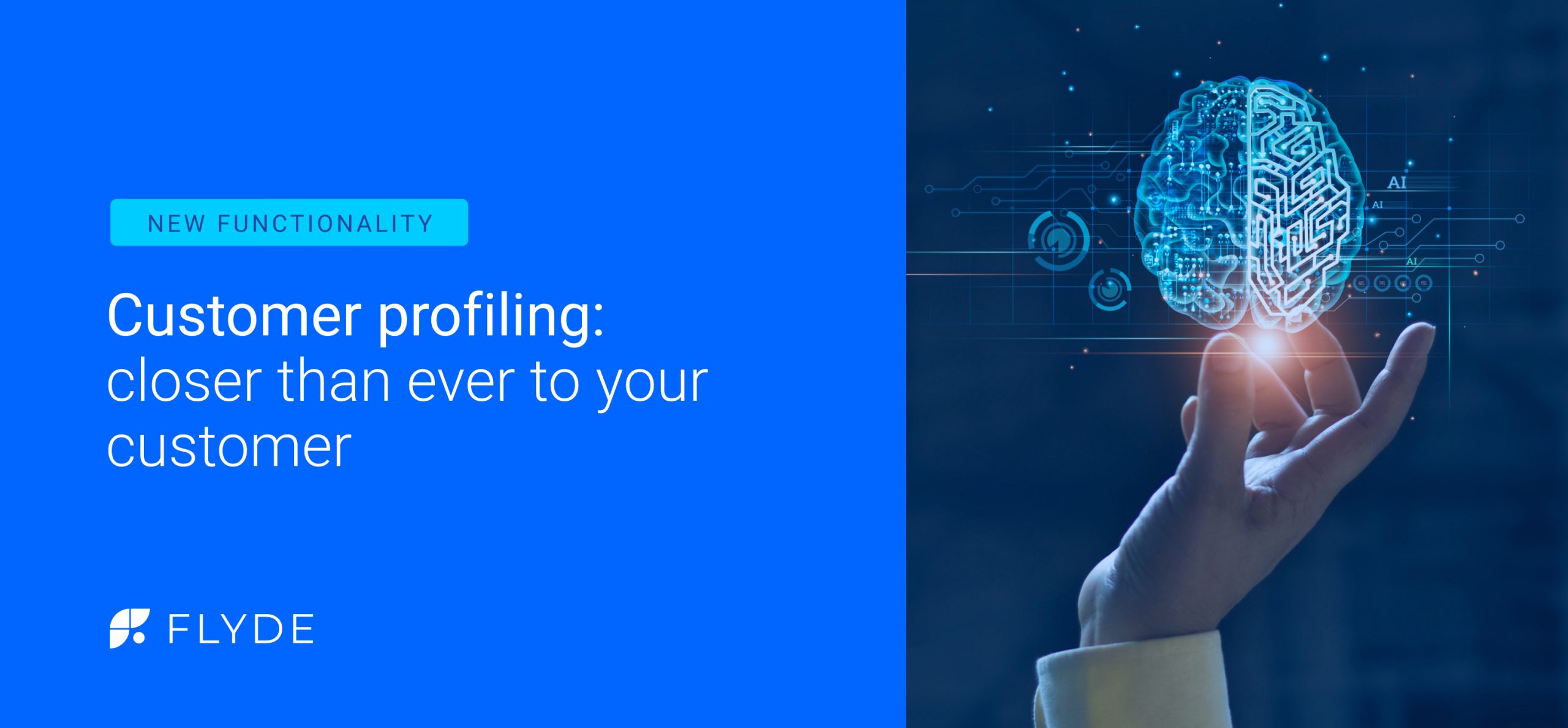
FLYDE is an easy-to-use Customer Data Platform designed to meet the needs of businesses looking to improve their customers’ experience, increase retention, ROI, ROAS, and Customer Engagement.
In this blog, we will discuss the new functionality of the platform: Customer Profiling guided by predictive AI models.
What is customer profiling?
Customer profiling is a tool that allows businesses to better understand their customers and tailor their offerings to meet their specific needs. With FLYDE’s customer profiling, businesses can select a product from their catalog and see the main characteristics of the customers who purchase it. Predictive AI models evaluate all available data your company has on your customers such as their behavior, purchase patterns, product preferences, browsing habits, and more.
How does FLYDE’s customer profiling work?
Suppose a company has a product in its catalog and wants to better understand its precise customers to adapt its marketing strategy. With FLYDE, the company can select that product and use predictive AI models to identify the main characteristics of the customers who purchase it. For example, the models may reveal that customers who buy that product earn more than €40,000, log into the ecommerce page twice a week, and often make purchases in physical stores.
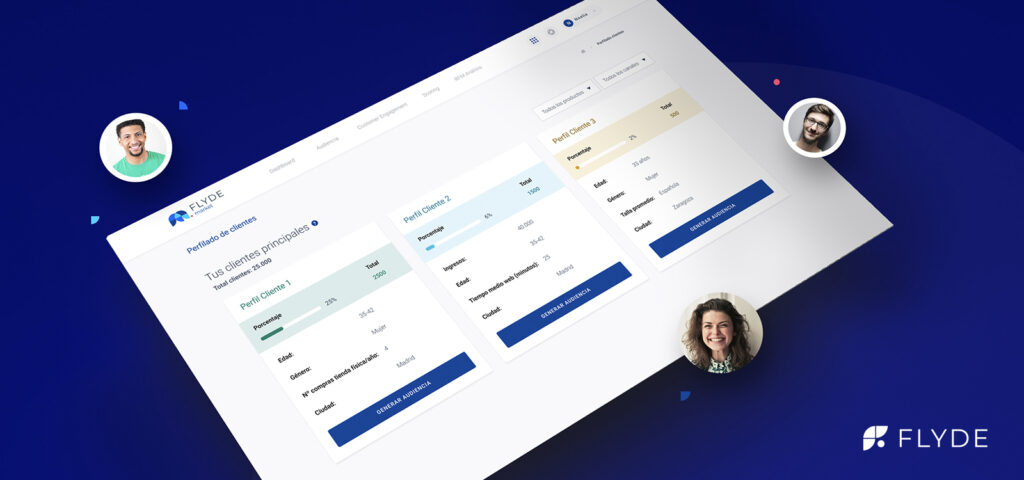
How can customer profiling improve your marketing strategy?
Predictive AI-guided customer profiling can significantly improve your marketing strategy by allowing you to better understand your customers and tailor your offerings to their specific needs. By using this new functionality of FLYDE, you can personalize your marketing messages to meet the specific needs and desires of your customers.
Additionally, customer profiling also allows you to improve the segmentation of your marketing campaigns. By better understanding your customers and grouping them into segments based on their characteristics, you can personalize your messages and offers for each specific segment. This will allow you to reach your customers with more relevant messages, increasing the likelihood of conversion to sales.
Identifying new potential customers with Customer Profiling
In addition to helping you better understand your current customers, FLYDE’s customer profiling also allows you to identify new potential customers. The platform’s AI uses the purchase behavior data of your current customers to find patterns and similarities between them.
These patterns help you identify new business opportunities by finding potential customers who have a similar profile to your current customers. By understanding your customers’ preferences and behaviors, you can use that information to reach a wider audience that is more likely to buy your products or services.
With FLYDE’s customer profiling, you can discover new market segments that may not have been on your radar and adjust your marketing strategy to reach them more effectively. This can result in a higher return on investment and increased customer loyalty.
Why FLYDE
Do you want your company to move on to the next level? A CDP is the key tool that will allow you to maximize the potential of your data and grow your business. Having control over all your data is now very simple.
Moreover, if you do not have IT or Data Scientist teams, this tool will allow you to outsource this function. And if you have them but want to reduce their workload and give more autonomy to your marketing and business teams when it comes to working with data, implementing an easy-to-use CDP would be the best option for your company. It will allow any single member of your company to use it, as this softwares are prepared for them.
Try it for free with our free trial (with auto-generated fake data)!
Start taking control of your data today.
Schedule a meeting with one of our experts and discover how FLYDE can help your company achieve its goals.


In recent years we have seen an unprecedented advance in Artificial Intelligence. ChatGPT, Wall-e, and other models that simulate human behavior and learning. But it has not yet been possible for an AI to develop Emotional Intelligence, the question here is whether it is possible for it to achieve it.
It is complicated to know if a friend or a family member needs a hug, humans use our Emotional Intelligence to read the needs of that person. Could we then know if a person we don’t know directly needs a hug or not?
Emotional Intelligence: how does it work?
In order to move from prejudice to judgment, human beings need information or data that bring us closer to knowledge about a specific issue. Thus, Emotional Intelligence, like any other type of Intelligence, needs to be fed with knowledge. This knowledge is composed of the new information that we have obtained about the concrete issue and the validation of the previous knowledge of similar situations that we have lived.
When a friend tells us about a situation he/she is living, we compare this information with data from the past, we see if it can be something problematic or not for that person and we act accordingly, with a hug or a reprimand, everything will depend on the judgment we make with the information we have.
Emotional Intelligence vs Artificial Intelligence
The obvious question that follows is: Will AI ever be able to do all this? Well, the answer is just as obvious: Who knows?
What we can be sure of is the current capabilities of AI. Artificial Intelligence today can approach and even surpass humans in part of the process mentioned above.
Continuing with the explanation of what Emotional Intelligence is, the part of generating and processing the information prior to making the judgment, can currently be carried out with AI. Even a good AI model, with enough data from a person (basic, attitudinal and behavioral), could perform this data processing better than a human being.
At present, AI still needs the human to make that final judgment with the processed data. AI could tell you that a person is bad and how bad they are, but it is a human who has to decide whether to give them a hug or not, and above all it is the one who has to give that hug.
The need to understand your customers
All of this brings us to a fundamental point for companies in terms of technological evolution. Artificial Intelligence at the current point where it is allows companies to know if your customer wants a hug or not, and how much they want it or if you are going to lose that customer by giving it to them.
Knowing the level of Customer Engagement of a customer, based on the processing of all the data that we companies have at our fingertips, we will be able to locate the point at which a customer is with our brand, and not only that. As we have previously commented, AI can do things in a similar or even better way than humans and, therefore, we could currently predict what our customer is going to do once we embrace him.
AI, as we can see, is not simply a Chat or Image generator, AI brings a series of infinite possibilities to humans, and companies should not take long to start benefiting from these.
WHY FLYDE?
Do you want your company to move on to the next level? A CDP is the key tool that will allow you to maximize the potential of your data and grow your business. Working like the big multinationals in the market, which already have this type of software, and having control over all your data is now very simple.
Moreover, if you do not have IT or Data Scientist teams, this tool will allow you to outsource this function. And if you have them but want to reduce their workload and give more autonomy to your marketing and business teams when it comes to working with data, implementing an easy-to-use CDP would be the best option for your company. It will allow any single member of your company to use it, as this softwares are prepared for them.
Start taking control of your data today.
Schedule a meeting with one of our experts and discover how FLYDE can help your company achieve its goals.

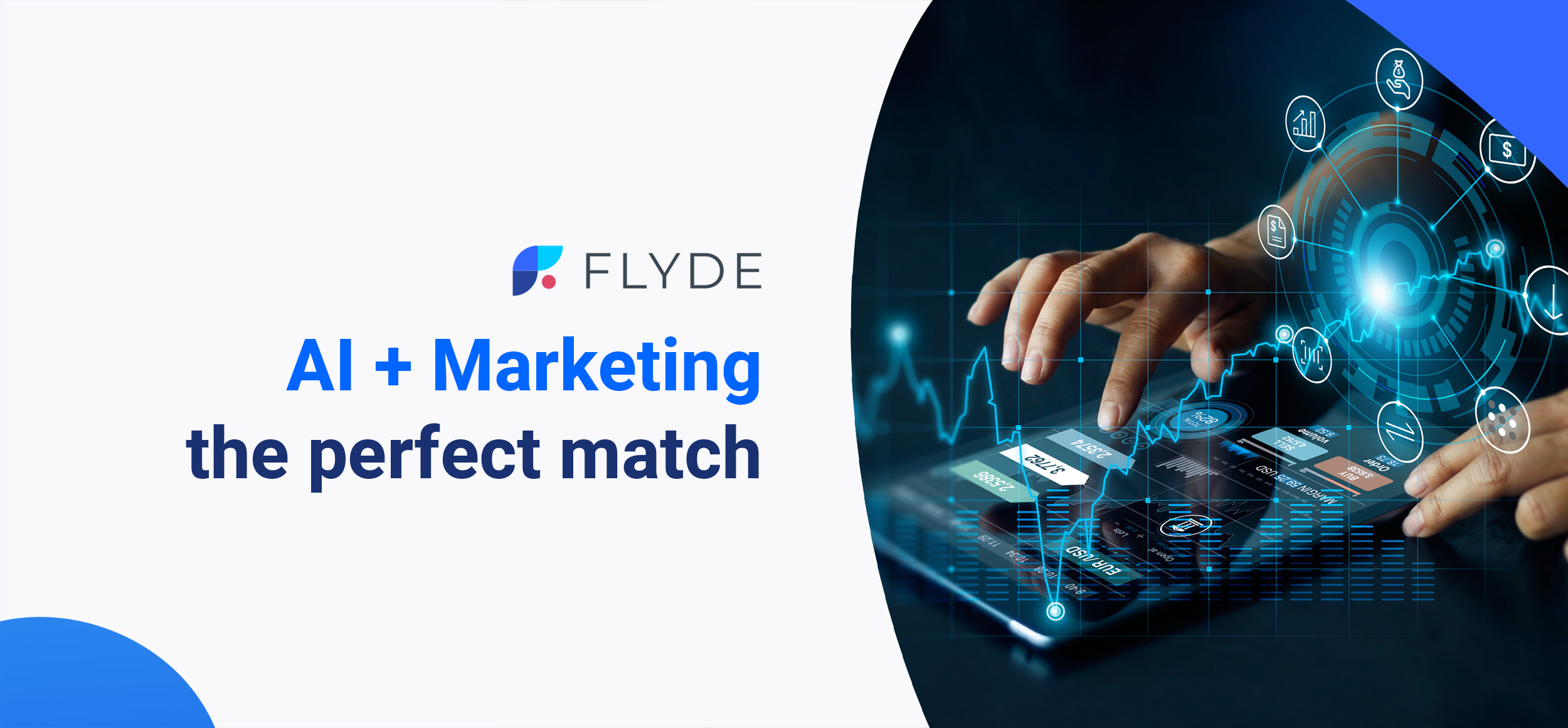
Artificial Intelligence, or AI, is the simulation of human intelligence in machines that are programmed to think and learn like humans. It is a branch of computer science that deals with creating intelligent machines that can think, learn, and adapt like humans.
AI is used in a variety of applications such as image recognition, natural language processing, decision making, and many other fields.
Types of AI that can be useful for marketing teams
Artificial intelligence (AI) is increasingly being used in marketing to help businesses better understand their customers and target their marketing efforts more effectively. Some specific ways that AI is being applied in marketing include:
- Personalization: AI can be used to analyze customer data and create personalized marketing campaigns that are tailored to the individual.
- Chatbots: AI-powered chatbots can be used to engage with customers in real-time, providing them with information and answering their questions.
- Predictive analytics: AI can be used to analyze customer data and make predictions about future buying behavior, which can help businesses make more informed decisions about their marketing strategies.
- Image and video recognition: AI-powered image and video recognition technologies can be used to analyze visual content and extract insights, which can be used to inform marketing strategies.
Data-Driven Marketing
Data-driven marketing is a strategy that uses data and analytics to inform marketing decisions. It involves collecting, analyzing, and interpreting data about customer behavior, demographics, and other factors to gain insights that can be used to improve marketing campaigns and drive business growth.
The goal of data-driven marketing is to use data to understand customer needs and preferences and to develop effective marketing campaigns that will reach and engage the right audience. This approach allows businesses to make data-driven decisions, such as which products to promote, which channels to use, and how to allocate budget.
Customer Data Platform to unify Marketing and Artificial Intelligence
A Customer Data Platform (CDP) is a system that allows businesses to collect, integrate, and manage customer data from a variety of sources in order to gain a single, unified view of the customer. CDPs are used to support data-driven marketing by providing a centralized location for storing and managing customer data, which can then be used to inform marketing decisions. A CDP for it to be useful, needs of Artificial Intelligence models to be run in order to process this huge amounts of data correctly, and to drive predictive models.
Here are a few ways that a CDP can be used for marketing:
-
- Customer segmentation: CDPs can be used to segment customers based on their behavior, demographics, and other factors, which can be used to create targeted marketing campaigns.
- Personalization: CDPs can be used to create personalized marketing campaigns that are tailored to the individual. This can be done by analyzing customer data and identifying patterns that can be used to create targeted messaging and offers.
- Campaign optimization: CDPs can be used to analyze the effectiveness of marketing campaigns and make adjustments as necessary. This can be done by tracking the performance of campaigns and identifying areas where they can be improved.
- Data Governance: CDPs help to ensure data governance by providing a central location for storing and managing customer data, and also help to ensure that data is accurate and up-to-date
- Cross-channel marketing: CDPs can be used to coordinate marketing efforts across multiple channels, such as email, social media, and web.
- Attribution: CDPs can be used to identify which marketing channels are most effective in driving conversions and revenue, which can inform future marketing investments.
- Predictive modeling: CDPs can be used to analyze data on customer behavior and make predictions about future buying behavior, which can inform marketing decisions.
WHY FLYDE?
Do you want your company to move on to the next level? A CDP is the key tool that will allow you to maximize the potential of your data and grow your business. Working like the big multinationals in the market, which already have this type of software, and having control over all your data is now very simple.
Moreover, if you do not have IT or Data Scientist teams, this tool will allow you to outsource this function. And if you have them but want to reduce their workload and give more autonomy to your marketing and business teams when it comes to working with data, implementing an easy-to-use CDP would be the best option for your company. It will allow any single member of your company to use it, as this softwares are prepared for them.
Start taking control of your data today.
Schedule a meeting with one of our experts and discover how FLYDE can help your company achieve its goals.

